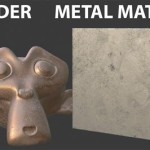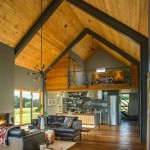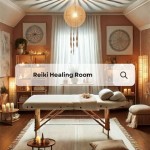Home Decor Bedroom Design: Creating a Personal Sanctuary
The bedroom functions as more than just a space for sleep; it represents a personal sanctuary, a retreat from the demands of daily life. Effective bedroom design prioritizes both aesthetics and functionality, fostering an environment conducive to relaxation, rejuvenation, and self-expression. This article explores key aspects of home decor bedroom design, providing insights into creating a space that reflects individual preferences and supports overall well-being.
Understanding Individual Needs and Preferences
Before embarking on any design project, it is crucial to understand the individual needs and preferences of the bedroom's occupant. This involves considering several factors, including lifestyle, personal style, and functional requirements. A thorough assessment of these elements forms the foundation for a successful and personalized bedroom design.
Lifestyle considerations include daily routines, sleep habits, and how the bedroom is utilized beyond sleeping. For instance, someone who enjoys reading in bed may require ample lighting and comfortable seating, while someone who works from home may need a designated workspace within the bedroom. Understanding these daily patterns is vital for optimizing the layout and incorporating appropriate features.
Personal style significantly influences the aesthetic choices within the bedroom. This encompasses preferred colors, textures, patterns, and overall design aesthetic, such as minimalist, bohemian, traditional, or modern. Gathering inspiration from various sources, such as magazines, online platforms, and showrooms, can help identify and refine a personal style. Visualizing the desired look and feel of the bedroom is a crucial step in the design process.
Functional requirements are practical considerations relating to storage, organization, and accessibility. Assessing the amount of clothing, accessories, and personal belongings that need to be stored is essential for determining the appropriate storage solutions. This may involve incorporating closets, drawers, shelves, or under-bed storage options. Ensuring ease of access to essential items and maintaining a clutter-free environment contributes to a more relaxing and functional bedroom.
Key Elements of Bedroom Design
Several key elements contribute to the overall design and functionality of a bedroom. These elements include color palette, lighting, furniture selection and placement, textiles and textures, and the incorporation of personal touches.
The color palette significantly impacts the mood and atmosphere of the bedroom. Calming and neutral colors, such as blues, greens, greys, and whites, are often preferred for promoting relaxation. However, bolder colors can be incorporated as accents to add personality and visual interest. Consider the psychological effects of different colors when making color selections. For example, warm colors like yellows and oranges can create a sense of energy and optimism, while cool colors like blues and greens can promote calmness and tranquility.
Lighting is another critical element in bedroom design, encompassing both natural and artificial light sources. Maximizing natural light by utilizing large windows and sheer curtains is ideal. Artificial lighting should include a combination of ambient, task, and accent lighting. Ambient lighting provides overall illumination, task lighting is used for specific activities like reading, and accent lighting highlights architectural features or artwork. Dimmers can be used to control the intensity of lighting and create different moods. Selecting the right color temperature for the light bulbs is also crucial; warmer tones are generally more conducive to relaxation.
Furniture selection and placement play a crucial role in the functionality and flow of the bedroom. The bed is typically the focal point of the room and should be strategically placed to optimize space and comfort. Other essential furniture pieces include nightstands, dressers, and seating options. Consider the scale of the furniture in relation to the size of the room to avoid overcrowding. Proper placement ensures ease of movement and maximizes the use of space. Before purchasing furniture, measure the room dimensions and create a floor plan to visualize the arrangement.
Textiles and textures add depth and visual interest to the bedroom. This includes bedding, curtains, rugs, and decorative pillows. Layering different textures, such as soft cotton, luxurious velvet, and natural linen, can create a sense of comfort and elegance. Choosing fabrics with varying weights and patterns adds visual dimension. Consider the maintenance requirements of different fabrics when making selections. For example, some fabrics may require professional cleaning, while others can be easily laundered at home.
Incorporating personal touches is essential for creating a bedroom that reflects individual personality and interests. This may include displaying artwork, photographs, or cherished mementos. Adding plants can bring a sense of nature and freshness to the space. Creating a gallery wall can showcase a collection of artwork or photographs. Personalizing the bedroom with items that hold sentimental value contributes to a more welcoming and comforting atmosphere.
Optimizing Space and Storage
Efficient space utilization and storage solutions are crucial for maintaining a clutter-free and organized bedroom. This is particularly important in smaller bedrooms where space is limited. Employing creative and practical storage solutions can significantly enhance the functionality and aesthetics of the room.
Vertical storage is an excellent way to maximize space in a small bedroom. Tall bookshelves, wall-mounted shelves, and reaching-to-the-ceiling cabinets can provide ample storage without taking up valuable floor space. Utilize the vertical space above closets and doorways to create additional storage areas. Storing items that are not frequently used on higher shelves can free up space for everyday items. Consider installing floating shelves to create a modern and minimalist look.
Under-bed storage is another effective solution for maximizing space. Storage containers or drawers that fit neatly under the bed can be used to store clothing, bedding, or other items. Consider purchasing a bed frame with built-in storage drawers. This can eliminate the need for bulky dressers and free up floor space. Ensure that the storage containers are easily accessible and organized to maximize their usefulness.
Multi-functional furniture can serve multiple purposes and save space. A storage bench at the foot of the bed can provide seating and storage. A nightstand with drawers or shelves can offer storage for books, electronics, and other bedside essentials. A Murphy bed can be folded away when not in use, creating more floor space for other activities. Selecting furniture pieces that serve multiple functions is a smart way to optimize space in a small bedroom.
Closet organization systems are essential for maximizing storage within the closet. Installing adjustable shelves, hanging rods, and drawers can create a customized storage solution. Utilize closet organizers, such as hanging shelves, shoe racks, and garment bags, to keep clothing and accessories organized. Consider using clear storage containers to easily identify the contents of each container. Regularly decluttering the closet and removing items that are no longer needed can free up valuable space.
Wall-mounted organizers can be used to store jewelry, accessories, and other small items. Hanging organizers can be placed on the back of doors or inside closets to maximize space. Utilize hooks to hang bags, scarves, and belts. These organizers help keep items visible and easily accessible while minimizing clutter on the dresser or other surfaces.
Mirror placement can also create the illusion of more space. Placing a large mirror on a wall can reflect light and make the room appear larger and brighter. Positioning a mirror near a window can amplify the natural light and create a more open and airy feeling.
By implementing these space-saving strategies, a bedroom can be transformed into a well-organized and functional space, regardless of its size. Careful planning and creative storage solutions can maximize the use of space and create a more comfortable and relaxing environment.

6 Eclectic Bedroom Design Ideas For Your Home Designcafe

25 Latest Bedroom Decoration Ideas By Livspace 2025

Best Bedroom Decor Ideas Forbes Home

Modern Bedroom Decor Ideas For Your Home Designcafe

30 Stylish Bedroom Wall Decor Ideas And Tips

101 Bedroom Decorating Ideas 2025 Interior Design

Bed Decoration Ideas To Recharge In Style Designcafe

Small Bedroom Ideas To Maximise Space And Style By Livspace

85 Best Bedroom Ideas 2025 Beautiful Decorating Tips

40 Best White Bedroom Ideas 2025 Luxury Designs







